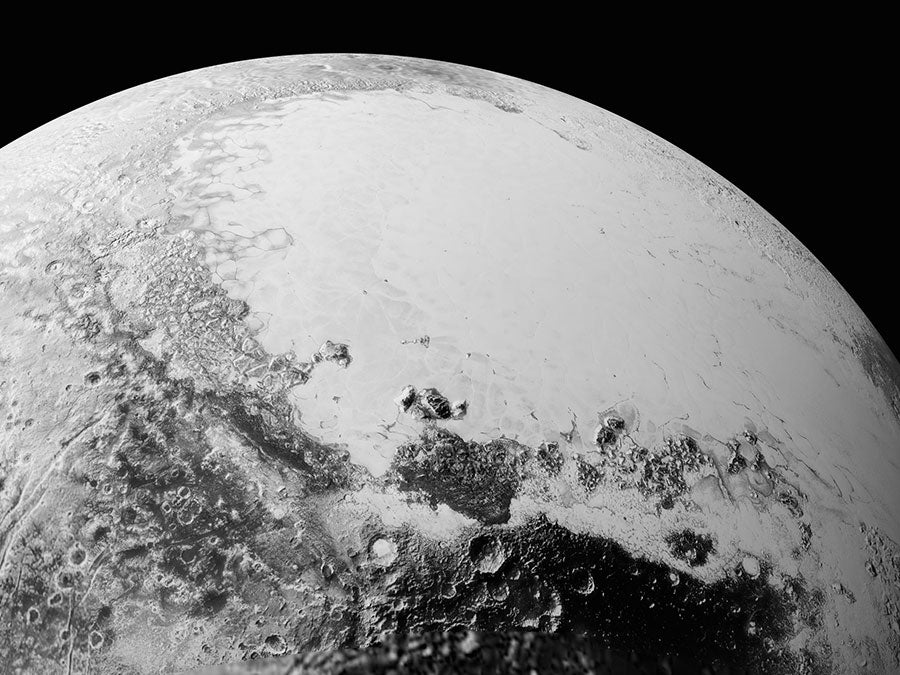Pluto's landscape is so complex that Nasa scientists aren't sure how it got there, after New Horizons images could show huge field of dunes
How the dunes, craters and huge mountains on the dwarf planet could have been formed is 'a head-scratcher', say scientists

Your support helps us to tell the story
From reproductive rights to climate change to Big Tech, The Independent is on the ground when the story is developing. Whether it's investigating the financials of Elon Musk's pro-Trump PAC or producing our latest documentary, 'The A Word', which shines a light on the American women fighting for reproductive rights, we know how important it is to parse out the facts from the messaging.
At such a critical moment in US history, we need reporters on the ground. Your donation allows us to keep sending journalists to speak to both sides of the story.
The Independent is trusted by Americans across the entire political spectrum. And unlike many other quality news outlets, we choose not to lock Americans out of our reporting and analysis with paywalls. We believe quality journalism should be available to everyone, paid for by those who can afford it.
Your support makes all the difference.The surface of Pluto is so complex that scientists aren’t sure how it got there, they have said, after images beamed back from New Horizons show an incredibly complex landscape.
The pictures show that the dwarf planet might have huge fields of dunes, massive nitrogen ice flows and valleys that could have formed as materials flowed over its surface. The complexity has stunned scientists —they shouldn’t be there, since the atmosphere is so thin.
“Pluto is showing us a diversity of landforms and complexity of processes that rival anything we’ve seen in the solar system,” New Horizons Principal Investigator Alan Stern said in a statement. “If an artist had painted this Pluto before our flyby, I probably would have called it over the top — but that’s what is actually there.”

Now scientists are trying to work out what happened to get the stunning range of complexity of features onto Pluto.
“Seeing dunes on Pluto -- if that is what they are -- would be completely wild, because Pluto’s atmosphere today is so thin,” William B. McKinnon, part of New Horizons’ Geology, Geophysics and Imaging team said in a statement. “Either Pluto had a thicker atmosphere in the past, or some process we haven’t figured out is at work. It’s a head-scratcher.”
Scientists have also been surprised to find that the haze in Pluto’s atmosphere has more layers than they knew. That creates a kind of twilight effect, meaning that terrain is lit up at sunset and gives them a kind of visibility that they’d never expected.

Last weekend, New Horizons started sending images back to Earth after its flyby in July — a process that will take a year, in all. The new pictures have enabled the New Horizons team to see Pluto in much detail than before, giving resolutions as high as 400 meters per pixel.
Join our commenting forum
Join thought-provoking conversations, follow other Independent readers and see their replies
Comments